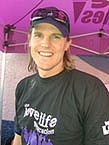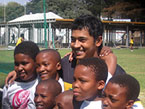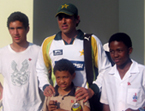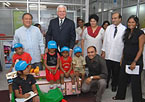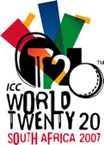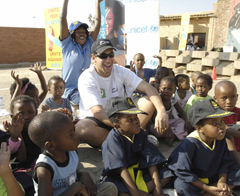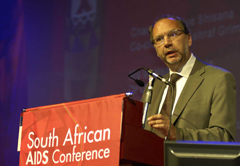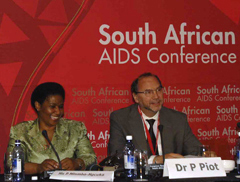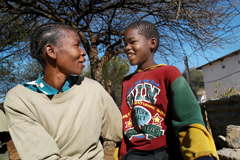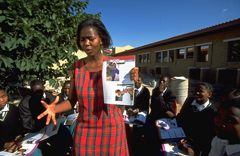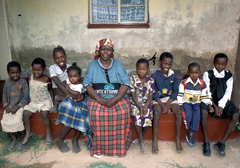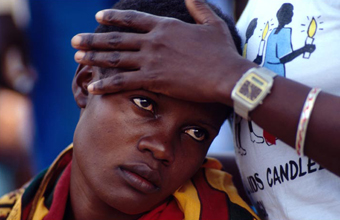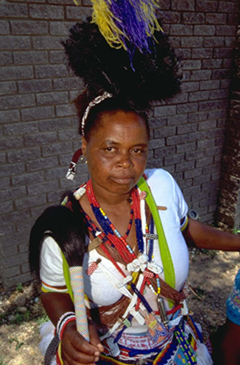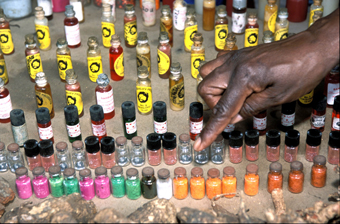Nazareth House, a faith-based organization located in Cape Town, was the first Catholic orphan care institution in South Africa to provide paediatric antiretroviral therapy for the HIV-positive orphans it cares for.
The Sisters of Nazareth House are currently caring for 35 children made orphans by AIDS and 20 adults living with HIV, most of whom, due to the complexity or severity of their symptoms can no longer care for themselves or be cared for by their family or community.

Photo credits : UNAIDS/L. Alyanak
Like Nazareth House, many faith-based initiatives have been on the front-line of the epidemic since its devastating effects on the population became apparent in Africa. Nowadays, faith-based organizations, which often reach the most remote communities, as well as being prominent in large urban centres, are uniquely placed to provide a range of quality HIV-related services (from training of home-based caregivers to provision of antiretroviral therapy) to those in need.
However, the valuable work of organizations within the Catholic Church based upon their religious principles sometimes lacked the coordination and level of support needed to improve the effectiveness of their responses to the AIDS epidemic.
It was under these circumstances that the Southern African Catholic Bishops’ Conference (SACBC), in partnership with the Catholic Medical Mission Board, launched the Choose to Care initiative. The initiative, supported by funding from the Bristol-Meyers Squibb Foundation and other sources, started in 2000 as a coordinated response to the overwhelming need to provide HIV-prevention education, care and support to communities in the southern African region.
“Since 2000 the SACBC AIDS Office has coordinated the response of the Catholic Church to AIDS in South Africa, Swaziland and Botswana, strengthening and building on existing programmes, as well as helping to initiate new ones. The continuum of Choose to Care in most of the programmes and projects linked to the SACBC has seen commitment to prevention, care and support to people infected and affected by AIDS,” stated Mr. Johan Viljoen, Programme Manger of Choose to Care Project.
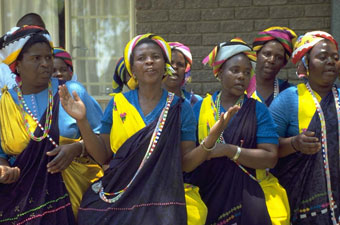
Photo credits : UNAIDS/L. Gubb
At first the Choose to Care projects were engaged in providing prevention and care services. However, the provision of treatment to those living with HIV, particularly orphans and vulnerable children, has become one of their main activities. The sites supported by the SACBC providing antiretroviral therapy aim at complementing government programmes in areas where government-funded antiretroviral therapy is not available, notably in resource-poor communities.
Nazareth House was one of the first sites where antiretroviral therapy was provided as part of the Choose to Care initiative. By replicating similar small-scale programmes implemented through the diocesan and parish system, the Catholic Church has been able to scale-up HIV programmes that remain rooted in and responsive to the needs of local communities.
This approach has been proven to be effective as is shown in a study recently researched and written by Rev. Robert J. Vitillo, Special Adviser on HIV for Caritas Internationalis. The study has now been published as part of the UNAIDS Best Practice Collection as an example of how a coordinated response to the epidemic made by a faith-based organization has increased HIV prevention education, care and support to communities affected by AIDS as well as complementing governments’ efforts to achieve universal access to prevention, treatment, care and support.
“The highly variable nature of the epidemic has been met with a wide variety of Best Practice responses. The Choose to Care initiative is especially interesting as it provides evidence that a large scale response to HIV may be achieved through support, coordination and guidance given to a large number of locally-rooted small-scale programmes,” noted Alistair Craik, Best Practice Manager, UNAIDS.
Drawing upon independent research the study shows that the Choose to Care projects are valued both for their compassion and practical effectiveness. Further proof of the strength and effectiveness of the Choose to Care model is provided by the fact that since 2005 when, as planned, funding support ceased, the great majority of projects have continued, sustained by new sources of support.



